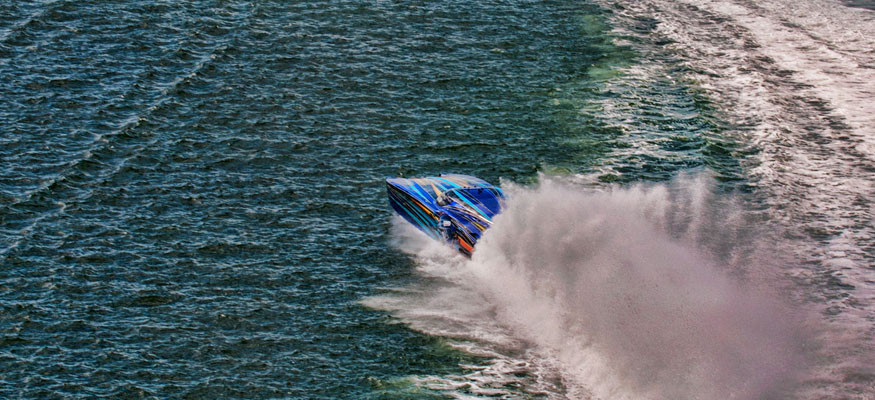Tres Martin’s Safety Corner: Crossing Wakes, Part II
In the last installment of his column, top go-fast powerboat driving instructor of the Performance Boat School he founded covered crossing the wakes when overtaking other powerboats. But just as often, Martin notes, you have handle to handle the wakes of oncoming vessels.
“The first thing you need to do is demonstrate to the oncoming vessel what your intentions are,” says Martin. “Are you going to take his wake on your port side/? If so, you need to show your port side to the vessel as early as possible, so the driver of the other boat knows what you’re doing.”
Martin says it’s crucial to attack the oncoming wakes at as close to a 90-degree angle as possible—”you want to take them as ‘head on’ as possible,” he notes. That angle of attack of attack will deliver a softer “hit” to you and your passengers than hitting oncoming wakes at softer angles. Throttle control and drive trim angle are equally important.
“Tuck your drives slightly the second you are about to take the first wave,” he explains. “At the exact moment the nose is about to hit the first swell, you want to remove about 15 percent of your power. The last thing we want when we hit the wake is a lot of propeller torque, because that will launch you. You want to get through the wake with minimal exiting of the propellers from the water. You can reapply the power and change the trim once you’re clear.”
But beware, Martin warns, as there may be more than one wake coming your way, especially in the case of larger vessels heading your way. As in crossing wakes while you’re overtaking vessels, distance from that vessel is your friend.
“If you see a 70-foot yacht coming head on and making wakes, you want to get as far outside those wakes to port or starboard as you can,” he says. “There may be three more large swells behind the first one, so you want to stay with your drives tucked slightly and your power decreased until you are clear of all of them.
“It’s all about what I call ‘good power management,'” he adds. “A lot of people believe that the best way to get through wakes head on is to push the nose down and hammer through them, but if you’re props are loaded with torque you’re still going to launch. That’s not the right way to do it.”
Related Stories
Tres Martin’s Safety Corner: Crossing Wakes
(Photo courtesy/copyright Jay Nichols/Naples Image.)


